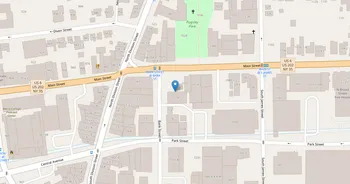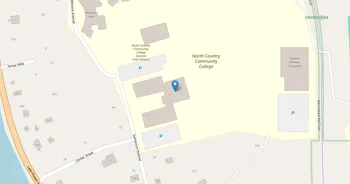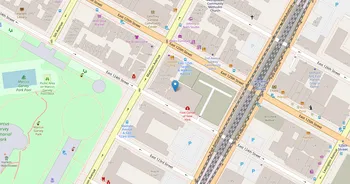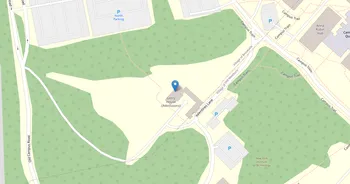Niagara University : Overview, Courses, Scholarships & Rankings
About Niagara University
On clear nights you can hear the Falls. Niagara University sits above the gorge, known for a welcoming, service-minded culture shaped by Vincentian roots. Academics blend a liberal arts base with practical learning in professional fields. Students tap modern labs and studios, a busy library, advising and tutoring, wellness support, and faith and service opportunities.
Campus life feels active yet neighborly: hall traditions, student media, theater, club and varsity sports, gorge hikes, and festivals in nearby Lewiston. Career prep runs through internships, mentoring, and ties across Western New York and the Canadian border. And Buffalo's arts and food scene is nearby. Distinctive touches include a steady ethic of service and purple-clad pride. Notable alum: Basketball Hall of Famer Calvin Murphy.
Key Institutional Details
Contact & Profile
Academic & Institutional
Academic Programs & Fields of Study
Niagara University offers 59 degree programs across 19 major academic fields, graduating approximately 1,601 students annually. The most popular fields by graduate volume are Education (20 programs, 827 graduates), Business (10 programs, 238 graduates), Psychology (3 programs, 158 graduates), Health (2 programs, 115 graduates) and Social Sciences (4 programs, 76 graduates). Explore program details, award levels, and graduate demographics below.
Education (20 programs, 827 graduates)
Educational Sciences, Teaching Methods and Pedagogy
Business (10 programs, 238 graduates)
Business Administration, Marketing and Entrepreneurship
| Program Name | Graduates | Gender Distribution | Award Levels | CIP Code |
|---|---|---|---|---|
| Business Administration | 62 |
|
Associate's
Bachelor's
Master's
|
52.0101 |
| Business Administration and Management | 48 |
|
Bachelor's
Master's
|
52.0201 |
| Public Finance | 33 |
|
Bachelor's
Master's
|
52.0808 |
| Accounting | 30 |
|
Bachelor's
Master's
|
52.0301 |
| Marketing Management | 25 |
|
Bachelor's
|
52.1401 |
| Hospitality Management | 18 |
|
Bachelor's
|
52.0909 |
| Tourism and Travel Management | 8 |
|
Bachelor's
|
52.0903 |
| Logistics and Supply Chain Management | 7 |
|
Master's
|
52.0203 |
| Marketing | 4 |
|
Bachelor's
|
52.1499 |
| Actuarial Science | 3 |
|
Bachelor's
|
52.1304 |
Psychology (3 programs, 158 graduates)
Psychological Sciences, Mental Health and Behavioral Studies
| Program Name | Graduates | Gender Distribution | Award Levels | CIP Code |
|---|---|---|---|---|
| Applied Behavior Analysis | 113 |
|
Master's
Post-Master's
|
42.2814 |
| Experimental Psychology | 33 |
|
Bachelor's
|
42.2799 |
| School Psychology | 12 |
|
Master's
|
42.2805 |
Health (2 programs, 115 graduates)
Healthcare Professions, Medical Sciences and Clinical Practice
| Program Name | Graduates | Gender Distribution | Award Levels | CIP Code |
|---|---|---|---|---|
| Registered Nursing | 73 |
|
Bachelor's
|
51.3801 |
| Mental and Social Health Services | 42 |
|
Master's
Post-Master's
|
51.1599 |
Social Sciences (4 programs, 76 graduates)
Sociology, Anthropology and Political Science Studies
| Program Name | Graduates | Gender Distribution | Award Levels | CIP Code |
|---|---|---|---|---|
| Criminology | 61 |
|
Bachelor's
Master's
|
45.0401 |
| Political Science and Government | 10 |
|
Bachelor's
|
45.1001 |
| Sociology | 3 |
|
Bachelor's
|
45.1101 |
| International Relations | 2 |
|
Bachelor's
|
45.0901 |
Kinesiology (1 programs, 34 graduates)
Exercise Science, Sports Medicine and Physical Recreation
| Program Name | Graduates | Gender Distribution | Award Levels | CIP Code |
|---|---|---|---|---|
| Sport and Fitness Management | 34 |
|
Bachelor's
Master's
|
31.0504 |
Computer & IT (2 programs, 28 graduates)
Computer Science, Information Technology and Cybersecurity
| Program Name | Graduates | Gender Distribution | Award Levels | CIP Code |
|---|---|---|---|---|
| Computer and Information Sciences | 19 |
|
Bachelor's
|
11.0101 |
| Information Systems Security and Auditing | 9 |
|
Master's
|
11.1003 |
Biological Sciences (3 programs, 26 graduates)
Life Sciences, Biotechnology and Biomedical Research
| Program Name | Graduates | Gender Distribution | Award Levels | CIP Code |
|---|---|---|---|---|
| Biology and Biological Sciences | 21 |
|
Bachelor's
|
26.0101 |
| Biochemistry | 4 |
|
Bachelor's
|
26.0202 |
| Biological and Biomedical Sciences | 1 |
|
Bachelor's
|
26.9999 |
Liberal Arts (1 programs, 21 graduates)
Liberal Arts Education, General Studies and Humanities
| Program Name | Graduates | Gender Distribution | Award Levels | CIP Code |
|---|---|---|---|---|
| Liberal Arts and Sciences | 21 |
|
Bachelor's
|
24.0101 |
Public Services (2 programs, 21 graduates)
Public Administration, Social Work and Community Services
| Program Name | Graduates | Gender Distribution | Award Levels | CIP Code |
|---|---|---|---|---|
| Social Work | 17 |
|
Bachelor's
|
44.0701 |
| Public Policy Analysis | 4 |
|
Doctorate (R)
|
44.0501 |
Admission Requirements & Test Scores
Comprehensive overview of admission criteria, standardized test score ranges, and application requirements for prospective students at Niagara University.
Application Requirements
Data based on IPEDS for 2022-2023 academic year. Test score ranges represent the middle 50% of admitted students (25th-75th percentile). Requirements may vary by program.
Tuition, Fees & Estimated Costs
Overview of tuition rates, housing, and other annual education expenses for undergraduate and graduate students
Financial Aid & Student Support
Summary of scholarships, grants, student loans, and financial aid statistics for undergraduate students
Student Success Metrics
Graduation rates and post-graduation earnings to help assess student outcomes and long-term value of education.
Loan Burden & Repayment Outcomes
Breakdown of loan repayment rates and student debt levels by income and dependency status.
Frequently Asked Questions
Find answers to the most common questions about Niagara University
How much does it cost to attend Niagara University?
The annual tuition at Niagara University is $38,135 for in-state students. When including room and board, books, and other expenses, the total estimated cost is approximately $54,085 for in-state students. Additional costs include room and board $12,980 (on) / $9,400 (off) and books and supplies $420.
Data based on IPEDS program completions for 2022-2023 academic year. Tuition and cost estimates are approximate and may not include all fees, personal expenses, or transportation costs.
What academic programs and degree levels does Niagara University offer?
Niagara University offers 59 academic programs across 19 major fields of study, with available degree levels: Associate's, Bachelor's, Postbac Cert., Master's, Post-Master's, Doctorate (Research).
Most popular program areas include:
- Educational Sciences, Teaching Methods and Pedagogy (20 programs)
- Business Administration, Marketing and Entrepreneurship (10 programs)
- Psychological Sciences, Mental Health and Behavioral Studies (3 programs)
- Healthcare Professions, Medical Sciences and Clinical Practice (2 programs)
- Sociology, Anthropology and Political Science Studies (4 programs)
Data based on IPEDS program completions for 2023-2024 academic year. Numbers reflect programs where students graduated, not all offered programs.
What is the acceptance rate for Niagara University?
Niagara University has an 85.3% acceptance rate and a 16.4% yield rate, making it moderately selective.
Admission statistics breakdown:
- Total applicants: 4,148
- Students admitted: 3,540
- Students enrolled: 580
Data based on IPEDS for 2022-2023 academic year. Admission statistics may vary by program and application cycle.
What financial aid and scholarships are available at Niagara University?
Niagara University provides financial aid to 20% of first-time, full-time students, with average grants of $31,682 and average loans of $9,305.
Average financial aid amounts by type:
- Pell grants: $5,297
- State/Local grants: $3,147
- Institutional grants: $28,587
- Federal loans: $5,578
The university supports 545 students with grants and 397 students with loans annually.
Data based on IPEDS for 2022-2023 academic year. Financial aid amounts and percentages may vary by program, enrollment status, and individual circumstances.
What is the average salary for Niagara University graduates?
Niagara University graduates earn a median salary of $48,289 after 6 years and $56,196 after 10 years.
The salary range 10 years after graduation spans from $40,069 (25th percentile) to $77,102 (75th percentile).
Data based on IPEDS for 2022-2023 academic year. Salary data reflects graduates who received federal financial aid (approximately 60% of all graduates). Actual earnings may vary significantly based on program, location, and individual circumstances.
Related Universities




Found something useful? Help others discover it too! Share with friends, on social media, or save for later - every share helps someone find the information they need.